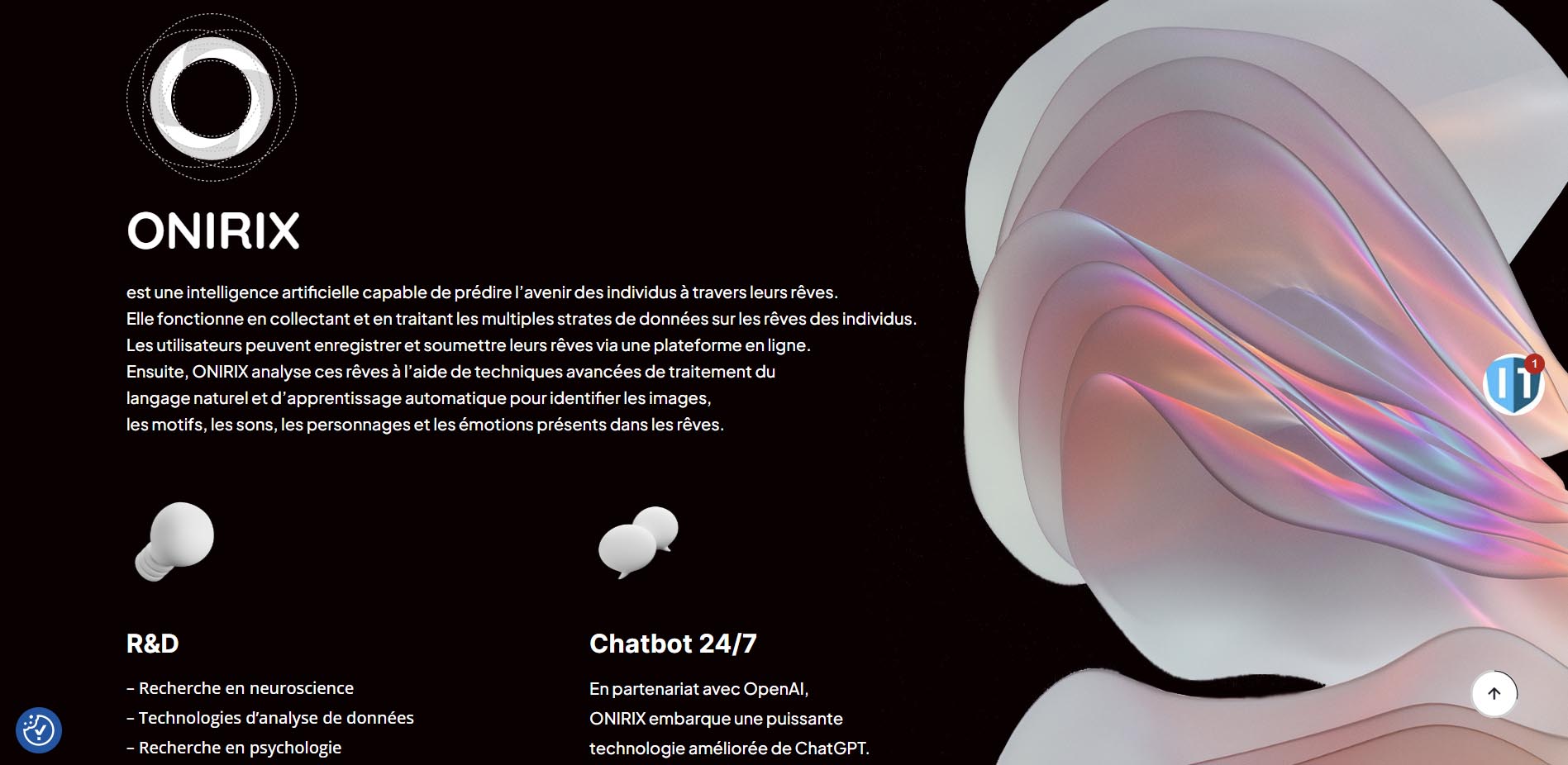Onirix: imagining the AI tool that decodes dreams
Competition
300+ participants – 3rd prize
Background
Organizer: Webcup24h
Team: Web integrator & SysRes Admin, content creator, and myself as UI/UX designer
Contribution: Research, Site map, wireframes and components, imagery using Dall.e and Adobe Suite.
Prompt
What if dreams were not just mere illusions of the mind? What if they were capable of predicting the future?
An advanced artificial intelligence capable of analyzing and decoding users’ dreams to predict situations such as encounters or problems.
The International Institute of Dreams wants to go further with AI Onirix.
The platform to be designed will present AI Onirix and dreams will become the key to our destinies.
The challenge
Design, develop, and publish a website in 24 hours.
Our team of 3 included a Web Integrator & SysRes Admin, a Content Creator, and myself as Ui/Ux designer.
Time to complete the mission: 24 hours
Starting 06/05/2023 11 a.m
Until 07/05/2023 11 a.m
Tools used
Figma, Figjam, WordPress, Photoshop, Illustrator, Trello, Dall.e, ChatGPT, paper, Google docs.
Site map
We initially started by defining the site map to outline the subsequent tasks. There were no specific constraints regarding what the platform should or should not include.
The only limitation we faced was time itself. We had to consider what we could realistically accomplish within a 24-hour timeframe while ensuring the following criteria:
- Building an easy-to-use platform
- Maintaining quality
- Addressing the prompt requirements
Consequently, we made the decision to focus on developing a robust homepage that would contain all the essential information.
Additionally, we created two additional pages: one to explain the subscription process and another to serve as a demo of the AI Onirix prior to its official launch.
The user journey is as simple as it gets, as users regularly visit websites using a similar map.
Team work, individual work
Our main concerns revolved around these aspects:
How can we design and develop a user-friendly website that is both visually appealing and unique?
The importance of imagery: How can we create high-quality images within the given time constraints?
How can we effectively collaborate and work efficiently both as a team and individually?
The key to addressing these concerns was trust.
Each team member trusted one another in their respective roles and valued each other’s opinions and contributions to our individual tasks.
While we may have had different ideas at times, it was essential to let go, allow each member to give their best performance, and truly foster collaboration in order to succeed.

Research, repeat, define, ideate.
In order to reach our goal while working together and simultaneously, all the design and development phases were mixed together: While the developer worked on creating the frame, the content creator started drafting the information, and I was looking for sources of inspiration for the website’s imagery.
The imagery and UI play a significant role in this project. We are looking to create an environment in which the user travels to a dreamy, floating place. We want to users to feel transported to a good place. One that they can identify with.
We explored three different themes: the abstract, the surreal, and natural elements.
The result is a responsive website that includes a chatbot, an AI simulation, and SEO optimization. We are satisfied with the outcome, although a few extra hours would have been beneficial for further improvements.
On May 23rd, our proposal was chosen by the jury as the third prize winner.


